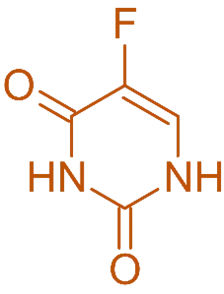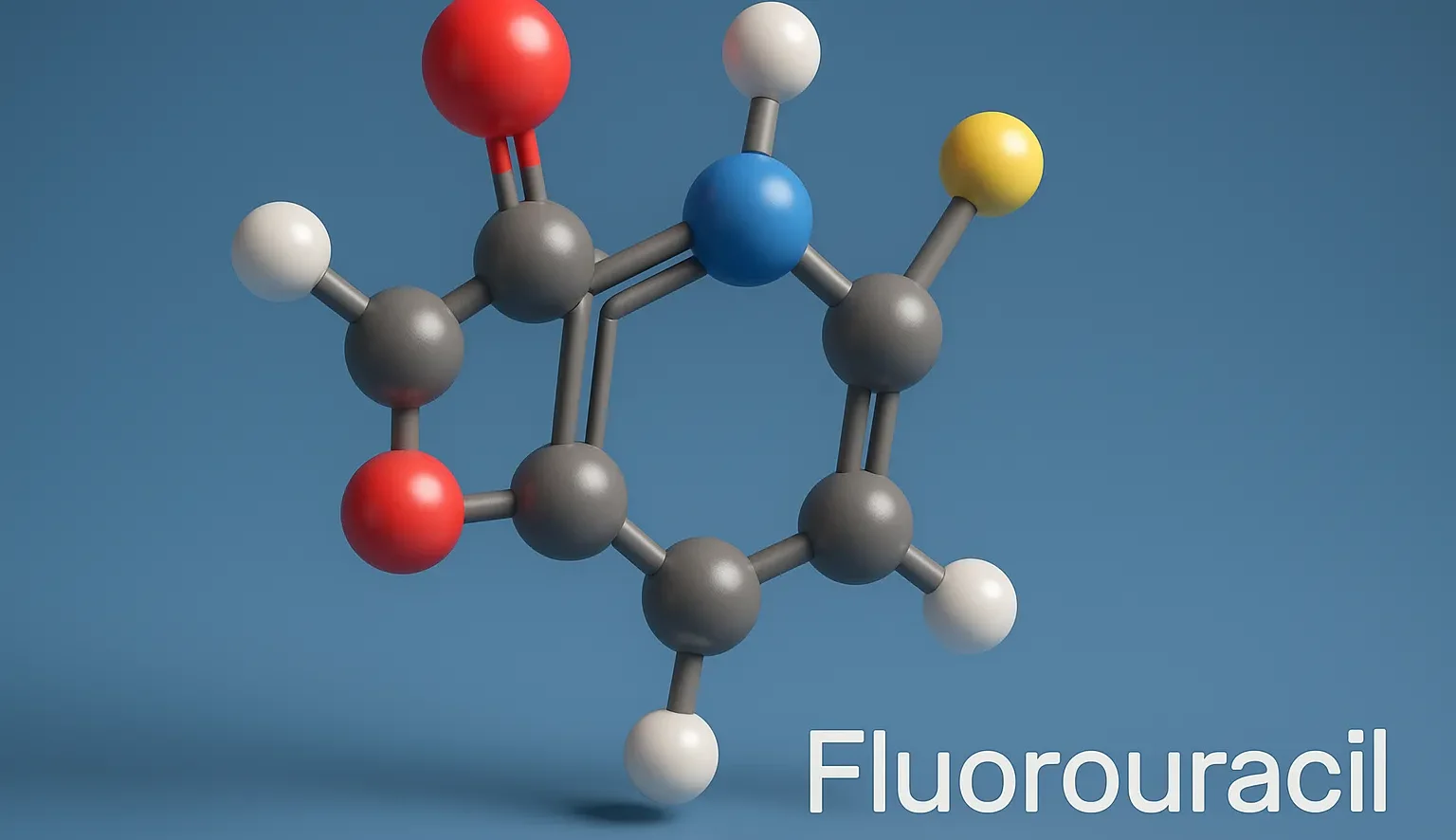Fluorouracil is an anti-neoplastic antimetabolite used to treat cancers like colorectal and breast by blocking DNA synthesis in rapidly dividing cells.
Structure of Fluorouracil
- It is a pyrimidine analog with the following structural features:
- Uracil Base: Similar to the natural nucleobase uracil.
- Fluorine Atom: Substituted at the 5-position.
- Chemical Formula: C₄H₃FN₂O₂

Mode of Action
- Fluorouracil acts as an antimetabolite by:
- Inhibition of Thymidylate Synthase: Prevents the synthesis of thymidine monophosphate (dTMP), essential for DNA synthesis.
- Incorporation into DNA and RNA: Disrupts nucleic acid function and structure.
- Induction of Apoptosis: Causes cytotoxicity in rapidly dividing cells.
Uses
- Colorectal Cancer: As part of combination chemotherapy regimens.
- Breast Cancer: In certain treatment protocols.
- Gastric Cancer: Alongside other chemotherapeutic agents.
- Pancreatic Cancer: In combination therapies.
- Head and Neck Cancers: As part of multi-agent chemotherapy.

